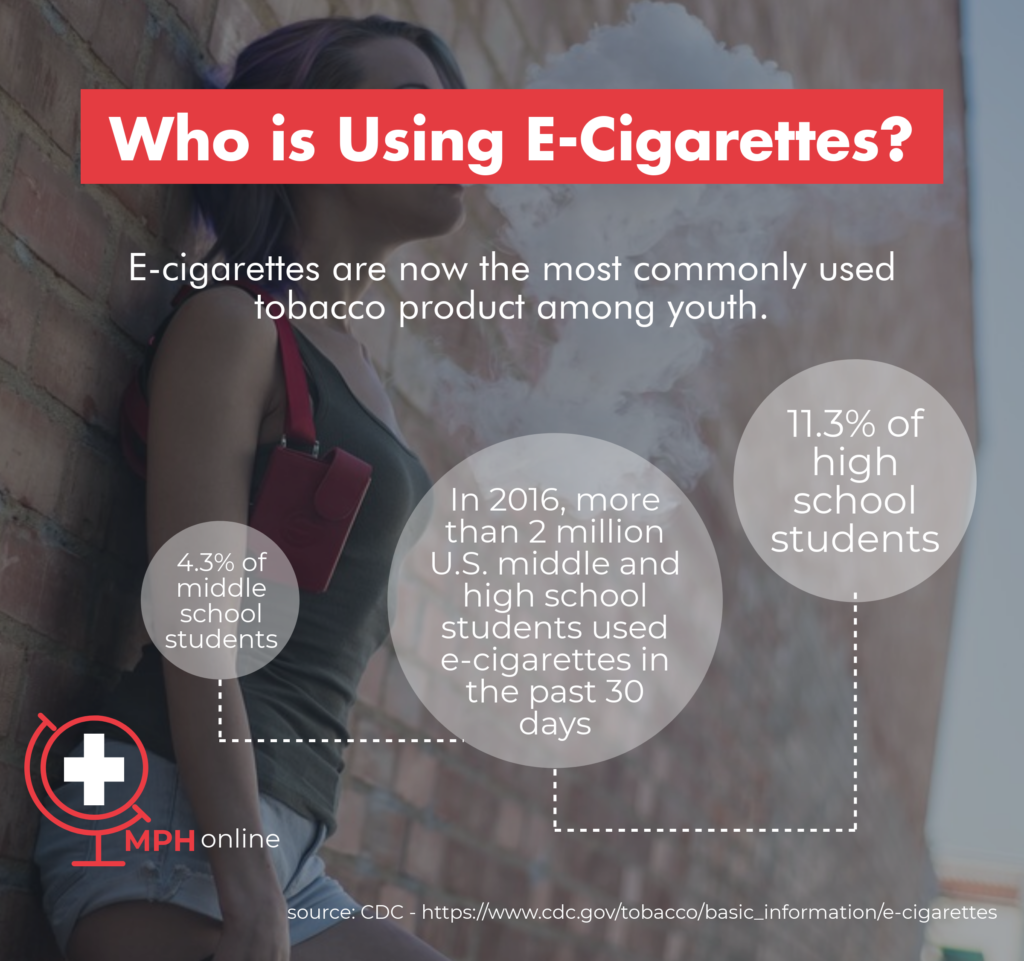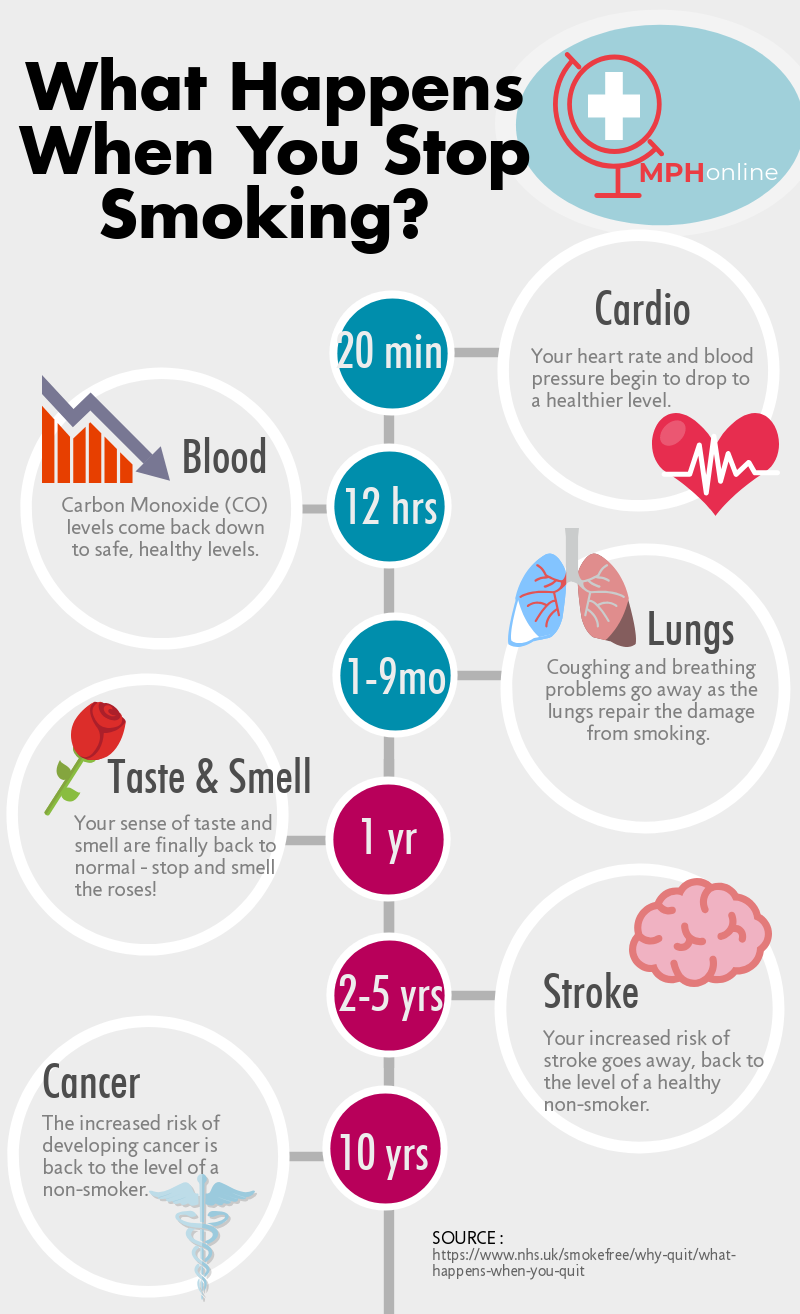In the world of popular vices, vaping is still the Wild West – there’s not a great deal of official regulation, the rules aren’t firmly in place, and the social, cultural, and public health impact of vaping isn’t really clear yet. After all, vaping hasn’t been around long enough to see any long-term studies or long-term effects. We don’t have thousands upon thousands of pages of research about how vaping affects the body, like we do with conventional smoking, and much of what we know about vaping is a mixture of circumstantial evidence, anecdotal evidence, and subjective opinions and conjecture. So the big questions – Is vape bad for you? Is vaping a drug? Does vaping have side effects? – are still up in the air.
What is Vaping and How Does it Work?
 Everybody knows how smoking works: dried and shredded tobacco is wrapped in a paper tube, which is then set on fire at one end, while the smoker inhales the smoke through the other end. As it turns out, vaping is only slightly more complicated, though it requires a lot more electronics. In vaping, a device (the vape pen or vape mod) heats a volatile liquid in a cartridge, which the user inhales from the device. That’s it; rather than burning tobacco, a vape simply turns a liquid to vapor (oh, that’s where they get the name!).
Everybody knows how smoking works: dried and shredded tobacco is wrapped in a paper tube, which is then set on fire at one end, while the smoker inhales the smoke through the other end. As it turns out, vaping is only slightly more complicated, though it requires a lot more electronics. In vaping, a device (the vape pen or vape mod) heats a volatile liquid in a cartridge, which the user inhales from the device. That’s it; rather than burning tobacco, a vape simply turns a liquid to vapor (oh, that’s where they get the name!).
That process can be as simple or a complicated as the user wants it to be, and vape enthusiasts are nothing if not gearheads. For instance, many e-cigarettes include an LED light that simulates the burning end of a cigarette – a completely useless, but aesthetically satisfying, feature. Middle-of-the-road vape pens may include bells and whistles like electronics that allow the user to set how much vapor they want the device to give off, while high-end “mods” are completely customizable, and, of course, way more expensive.
The second part of the process – the “smoke” – offers just as much variation as the device. As a thorough article in Gizmodo by a vape maker explains, the main ingredients in e-liquid – or, as it’s more popularly (and ickily) called, vape juice – are pretty simple: glycerin, for the clouds of vapor; propylene glycol, for the flavoring to bind to; flavoring, for… well, flavor; and nicotine, which is obtained as a pure, pharmaceutical-grade concentrate.
Vaping: The Magic Bullet for Smoking Cessation?
A lot of the attention e-cigarettes and vaping received early on was due to its potential for helping people stop smoking. After all, that was their original intention – the first modern vape was developed by a Chinese pharmacist and inventor, Hon Lik, who was tired of the continual failure of nicotine patches to help him stop smoking. Hon realized that emulating the act (or habit) of smoking, without the harmful carcinogens of burning cigarettes, would make it easier to stop smoking actual cigarettes.
It took a couple of years of experimenting with the contents of the e-liquid and the best method for heating it – as well as how to miniaturize the whole contraption to make it more like smoking (it’s easy to imagine early versions looking more like a malfunctioning breathing apparatus). By 2003, Hon had patented his design and e-cigarettes were being sold on the market in China; they came to America a few years later – to virtually no acclaim.
In fact, it was not until the 2010s that vaping became a viable business in the US, once anti-smoking ordinances hit a kind of critical mass – and the turning point was really New York City’s outdoor smoking ban in 2011. By that time, bars, restaurants, and theaters had been off-limits for some time; most workplaces had already banned indoor smoking; even many apartment buildings and rental homes had no-smoking policies written into the lease. Once smokers began to feel that even the outdoors was a no-go, the path forward for vaping had opened up.
So is Vaping Helping Smokers Quit?
As usual, nothing drives innovation like necessity, and for the more than 37 million smokers in the US, not being able to light up anywhere but home created a necessity that needed to be filled. Early on, vaping was marketed explicitly as a smoking-cessation aid, a way to get off more dangerous cigarettes and eventually wean off nicotine altogether – if that’s what they want.
Studies are showing that, for adult smokers, vaping can work to stop smoking; an estimated 2000 smokers quit in 2015 by substituting with vaping. On the face of it, that’s a clear public health win, since smoking costs the American economy nearly $100 billion in health care expenses every year; every smoker who stops is a gain for everybody.
The reality is more complicated though, because the same study of 70,000 users found that vaping nicotine still doubles the risk of heart attack over not vaping at all, and (more of a concern) many people who vape to stop smoking actually end up doing both – multiplying their risk of heart attack by five. Give it a little thought, and it’s not surprising; most smokers who also vape are only vaping because they can’t smoke in most public places. In other words, they’re not actually trying to stop smoking, just settling for vaping because they’re not allowed to smoke.
Vaping for Teenagers and Young Adults
In the last few years, vaping has overtaken cigarette usage among teenagers – in a 2016 Pediatrics study, 11% of 10th graders had used electronic cigarettes, versus 5% who used conventional cigarettes; more than 4% of middle schoolers had tried vaping. In all, more than 2 million teenagers admitted to vaping within the last 30 days. In some respects, that could be considered a good thing; if the choice is between vaping and smoking, vaping is relatively safer, without the harmful chemicals the come from burning tobacco and paper. However, vaping raises its own worries when it comes to teenagers.

The biggest concern for teenagers vaping, especially among parents, is whether vaping can act as a gateway to smoking conventional cigarettes. While the idea of a “gateway drug” has been largely disproven (studies have shown, for instance that smoking marijuana does not typically lead to harder drugs), there is ample evidence that young people who vape are highly likely to move on to conventional cigarettes.
The irony, then, is that vaping has been proven to help adult smokers quit, but has also been shown to lead teenagers to move from e-cigs to real cigarettes. A 2015 study shows that for 2000 adults who used vaping to stop smoking, more than 160,000 teenagers and young adults made the transition in the opposite direction. That is definitely a public health concern, and even more so if young people continue to vape as well as smoke – the risk of heart attack, for instance, is increased five times by both vaping and smoking.
In addition to the problem of vaping leading to smoking, the Pediatrics study found that the volatile chemicals in e-cigarettes, like propylene glycol and glycerol, can form carcinogenic compounds when heated, and that those compounds were found in the urine of the 16 year olds who were tested. While it’s just one study, it does indicate that vaping does cause a risk of exposure to potential cancer-causing substances – less than conventional cigarettes, perhaps, but still not as safe as vape marketing likes to claim.
Is Vaping a Drug?
One of the main questions vape-curious folks want to know is “Is vaping a drug?” Of course, on its own, vaping is not a drug – it’s a method of drug delivery, just like smoking, drinking, or injecting. In and of itself, vaping is neutral; a vape pen or mod can vape any substance that can be suspended in vape liquid. Most commonly, that is nicotine, but it can just as easily be THC, opioids, or synthetic “designer” drugs like DMT or MDMA – even meth.
An ongoing study at Virginia Commonwealth University is looking into the dangers of recreational drug use with vape, and have found that many of the substances for sale on the Dark Web – such as e-juice containing heroin and morphine – are not just Nancy Reagan’s worst nightmare come to life – they’re real, functional, and obtainable.
So the short answer is, of course vape is not a drug – just like a cigarette is not a drug, and a hypodermic needle is not a drug. But as a drug-delivery system, vaping has the potential to deliver just about any drug a user could want. That fact has sparked a lot of worry about parents especially, but at this time, it’s mostly conjectural.
Is Vaping Without Nicotine Bad for You?
Is vape bad for you? Kind of – that’s the short answer. If you’re vaping nicotine, you’re still upping your chances of heart attack and stroke, but if your vaping helps you stop smoking tobacco, you’re decreasing your chances of cancer, lung disease, and all sorts of other nasty effects of smoking. As far as we know, high-quality vape juice, used with a well-designed, high-end vape pen or mod, is safe. If the user is vaping nicotine, they’re better off than if they were smoking. Is vaping without nicotine bad for you? Not at all – without any drug in the vape juice, you’re just inhaling vaporized glycerin and flavorings.
However, that’s only true of higher-end, “connoisseur” vaping, where users trust that the ingredients and process are safe, clean, and transparent. There are legitimate concerns when it comes to cheaper foreign products, like gas-station e-cigs. While the FDA has approval to regulate e-cigarettes and vaping, very little actual “regulation” takes place. Essentially, vape makers are required to inform the FDA of what is in their product, but there is no public disclosure. Companies can tell customers as much or as little as they want.
And there are a lot of valid concerns when consumers don’t know what they’re consuming. For a simple example, most vape liquid uses propylene glycol – a completely harmless chemical that also makes asthma inhalers work – to suspend and deliver the flavorings. However, cheap, mass-market vapes have been found to contain diethylene glycol – an industrial solvent which is definitely poisonous. (It’s the reason why spilled antifreeze should be cleaned up immediately, since its sweet taste will attract pets and make them sick.)
In mass-market e-cigs made in foreign countries, where there is even less regulation, there are realistic concerns about the presence of heavy metals and banned chemicals. Some of the common ingredients in vape juice are known to turn carcinogenic when overheated; while higher-quality vapes control temperature to avoid this problem, many cheaper products do not. And, of course, there is the slim but still realistic chance of a battery exploding or catching fire.
What is Popcorn Lung (and is it Really Dangerous)?

Since the popularity of vaping has grown, the term “popcorn lung” has hit the mainstream is a way that would almost be laughable, if there were anything funny about pulmonary obstruction. The vaping-popcorn lung connection has been driven home by the media, making “What is popcorn lung?” one of the most popular vaping-related searches on Google. Because “popcorn lung” sounds at once completely absurd and unsettlingly creepy, it’s caught public attention more than any other possible side effect of vaping.
So what is popcorn lung? The medical name is “bronchiolitis obliterans,” unfortunately abbreviated to BO – if it’s embarrassing to ask a doctor if you might have “popcorn lung,” just try asking a doctor if you have BO. Bronchiolitis obliterans can results from exposure to many different chemicals that cause inflammation and obstruction of the bronchioles, the smallest passages in the lungs.
But the specific chemical associated with popcorn lung symptoms is diacetyl, a food additive that was once used to make popcorn taste buttery without butter. That’s where the name comes from – BO was first linked to diacetyl when workers in a popcorn factory began getting sick.
One of the particular dangers of popcorn lung is that popcorn lung symptoms look indistinguishable from lots of other lung diseases, like asthma or bronchiolitis obliterans organizing pneumonia (which has the inappropriately whimsical acronym BOOP). Popcorn lung symptoms include:
- Shortness of breath
- Wheezing
- Dry cough
- Exhaustion
Because numerous other lung diseases cause the same symptoms, popcorn lung can often go undiagnosed, and therefore improperly treated, allowing the damage and scarring that causes popcorn lung symptoms to increase.
So what is the vaping-popcorn lung connection? Most high-end vape makers don’t use diacetyl, but in 2015, more than half of the mass-market e-cigarettes studied were found to contain the chemical – especially flavored vape juice. The diacetyl makes the flavors richer, but because the vapor is being breathed in, it exposes users to the risk of popcorn lung, which increases the longer these liquids are vaped. Particularly concerning is the fact that diacetyl is primarily found in flavored e-liquids – which tend to be more appealing to teenagers.
Do the Benefits Outweigh the Risks? The Public Health View
So is vape bad for you? It’s complicated. Because vape juice is manufactured, it’s entirely possible to vape with any amount of nicotine the user wants; that means, theoretically, it would be easy to switch from smoking to vaping, and slowly wean off nicotine altogether. Nicotine, after all, is the danger to heart health, while other substances generated by smoking contribute to lung disease, cancer, tooth decay, and the other ills.
So, simply comparing vaping to smoking, vaping is obviously healthier – and insofar as vaping can help smokers stop smoking, vaping is a net positive for public health. A former smoker’s health improves every year after quitting, as their body naturally works to repair the damage, and within 10 years, nearly all of the dangers of smoking are reduced or reversed altogether. The sooner a smoker quits, the better. So the question, “Is vape bad for you?” can be answered, “Well, it’s better than smoking.”
Obviously, though, complete, permanent smoking cessation – without substituting another nicotine delivery system – is the healthiest option. Nicotine is still linked to heart disease, stroke, high blood pressure, and other cardiovascular problems (although, to nicotine’s credit, it’s also linked to attentiveness, memory improvement, and may even be used medicinally to combat Alzheimer’s and Parkinson’s). When the potential side effects of vaping are added to the mix, it’s obvious that we’re operating on a sliding scale – vaping is safer than smoking, but more dangerous than not vaping or smoking at all.
The US/UK Divide (Or, Why are Americans So Afraid of Vaping?)
So is vaping good for public health? At this time, considering what we know and what we hypothesize, the answer is a tentative and qualified “yes.” It helps adults cut down or stop smoking altogether, improving public health in the long run, and while concerns about whether vaping leads to smoking in teenagers are valid, they’re not definitive.
A very interesting divide occurs when we compare how the US has approached vaping, as opposed to how the UK has approached it. As reported by the Guardian, the British public health authorities have almost unanimously embraced as an alternative to smoking, reasoning that the greater good to public health outweighs the potential (and unsubstantiated) dangers.
From the outside, initiatives like New York City’s ban on indoor vaping seem like typical American fear-mongering. While the Royal College of Physicians in the UK has declared vaping almost completely safe, and a definite improvement over smoking, the National Institute on Drug Abuse in the US focuses on the potential for harmful chemicals. Meanwhile, while the FDA has dragged its feet on either further study or regulation, prompting conspiracy theories about the influence of Big Tobacco, UK citizens rate vaping their number one choice to stop smoking.
 Ironically, its seems as though the American anti-smoking movement of the last 40 years or so has been too successful. While smoking bans and public health announcements have drastically reduced the number of people who smoke, and made significant improvements in public health, smoking and nicotine have been so thoroughly stigmatized that even a healthier alternative – namely, vaping – is subject to the same stigma.
Ironically, its seems as though the American anti-smoking movement of the last 40 years or so has been too successful. While smoking bans and public health announcements have drastically reduced the number of people who smoke, and made significant improvements in public health, smoking and nicotine have been so thoroughly stigmatized that even a healthier alternative – namely, vaping – is subject to the same stigma.
Unfortunately, as with other addictions, stigma and bias makes it harder for smokers to ask for help, or to help themselves. When people who have addictions are made to feel ashamed, they are more likely to become defensive and less likely to seek help. By offering the alternative of vaping, without the stigma, the US could potentially see a significant reduction in smoking.
How to Use Vaping to Quit Smoking
The consensus seems to be clear. If you don’t smoke and don’t vape, don’t start. The health risks of both, compared to never using, are too great to be worth it.
But if you smoke, you can successfully use vaping to quit smoking. It’s never easy to quit smoking, but there’s a mountain of anecdotal evidence that quitting is easier with vaping than with cold turkey – as long as you don’t get sucked into adding a new habit to your existing one.
There are some factors to keep in mind if you want to use vaping to quit smoking:
Spring for a quality vape device. If you’re serious about quitting, making the extra investment in a higher-quality vape pen or mod has material and psychological benefits. For one, the greater expense can actually have the effect of making you take your decision more seriously. A cheap e-cig is easy to give up on; a device you paid $100 or more for demands some respect. Higher-quality devices also give users a more satisfying experience, closer to real smoking, which can help smokers give up the smoke.
Limit your exposure to harmful chemicals. Big Tobacco has made extensive forays into vaping, but it’s primarily in the form of cheap, disposable convenience-store vapes. Because they’re so common and cheap, these are usually where people start when they’re trying to use vaping to quit smoking. Unfortunately, these are also the devices where you’re most likely to encounter chemicals like diacetyl, as well as other hazardous ingredients.
Gradually reduce your nicotine levels. A high-quality vape will give you much more flexibility in your choices of vape liquid. One of the biggest benefits of that flexibility is the opportunity to buy liquids of varying nicotine concentrations, and gradually wean off the nicotine. In fact, many vape users will work their way down to no nicotine at all, and continue to vape for the enjoyment of vaping itself. Even if you keep using nicotine, though, the health benefits from stopping smoking are still significant.
Don’t smoke and vape! One of the pitfalls of using vaping to quit smoking is that smokers often end up using both – vaping in public, when they are not allowed to smoke, and still smoking at home. We have to underscore the fact that this is defeating the purpose: health dangers are intensified by combining smoking and vaping, and while it may still reduce smoking, cutting down on smoking and quitting smoking are not the same.
